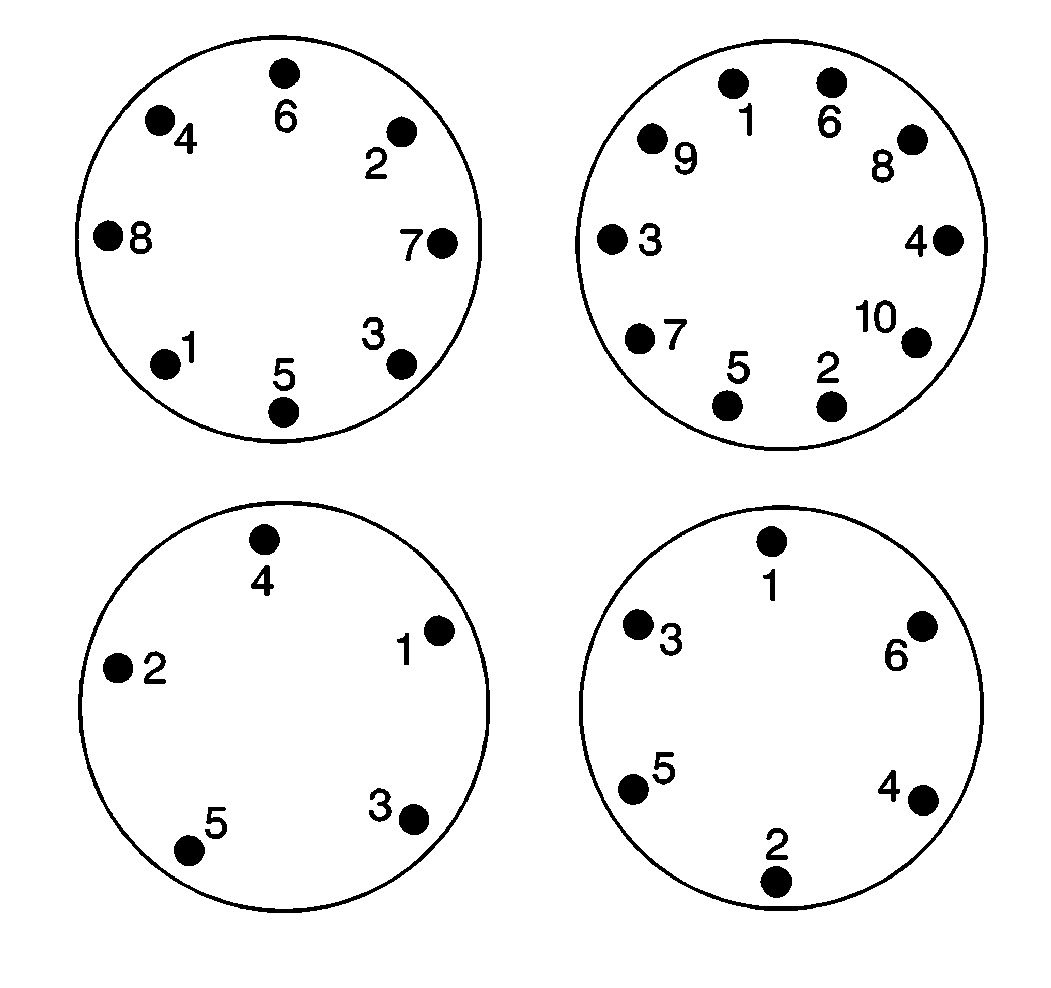Caution: If penetrating oil gets on the vertical surfaces between the wheel and the rotor or drum it could cause the wheel to work loose as the vehicle is driven, resulting in loss of control and an injury accident.
Notice: Never use heat to loosen a tight wheel. It can shorten the life of the wheel, studs, or hub and bearing assemblies. Wheel nuts must be tightened in sequence and to the specified torque to avoid bending the wheel or rotor.
Notice: Improperly tightened wheel bolts or nuts can lead to brake pulsation and rotor damage. In order to avoid expensive brake repairs, evenly tighten the wheel bolts or nuts to the proper torque specification.
Important: Removing wheels can be difficult because
of foreign material or a tight fit between the wheel center hole and the hub or
rotor. Excessive force, such as hammering on the wheel or tire, can cause
damage. Slightly tapping the tire side wall with a rubber mallet is acceptable.
Removal Procedure
- Raise the vehicle. Support the vehicle with suitable safety stands. Refer to Lifting and Jacking the Vehicle in General Information.
- Remove the wheel bolts from the tire and wheel assembly.
- Mark the location of the tire and wheel assembly to the hub assembly.
- Remove the tire and wheel assembly from the vehicle.
- Clean the wheel bolts, the wheel, and rotor mounting surfaces.

Installation Procedure
- Install the tire and wheel assembly to the hub. Align the locating mark of the wheel to the tub.
- Install the wheel bolts and tighten in a criss/cross pattern.
- For steel wheel and optional aluminum wheel with a large round center cap, install wheel cover or cap onto wheel. Hand tighten all 5 of the cap nuts with the aid of a socket. Then, with a wrench, tighten each of the caps an additional ¼ turn (90 degrees).
- Remove safety stands and lower the vehicle.
Caution: Before installing the wheels, remove any buildup of corrosion on the wheel mounting surface and brake drum or disc mounting surface by scraping and wire brushing. Installing wheels with poor metal-to-metal contact at the mounting surfaces can cause wheel nuts to loosen. This can cause a wheel to come off when the vehicle is moving, causing loss of control and possibly personal injury.

Notice: Refer to Fastener Notice in the Preface section.

Important: Tighten the wheel bolts evenly and alternately in order to avoid excessive run out.
| 2.1. | Hand Tighten all 5 wheel bolts. |
| 2.2. | Use a torque wrench to tighten wheel bolts using a criss/cross pattern. |
Tighten
Initial Torque: 63 N·m (46 lb ft).
| 2.3. | Use a torque wrench to final tighten wheel bolts. |
Tighten
Final Torque: 125 N·m (92 lb ft).
